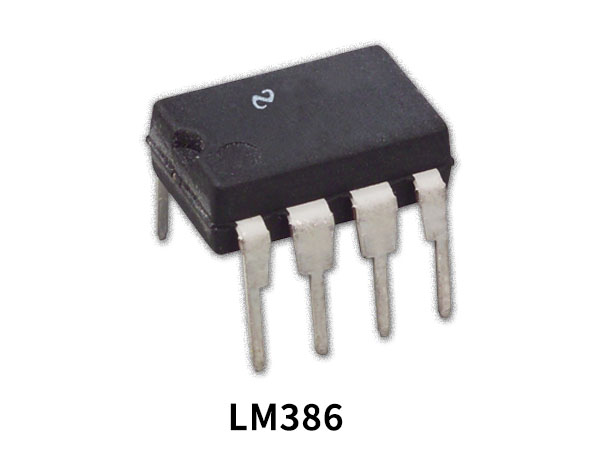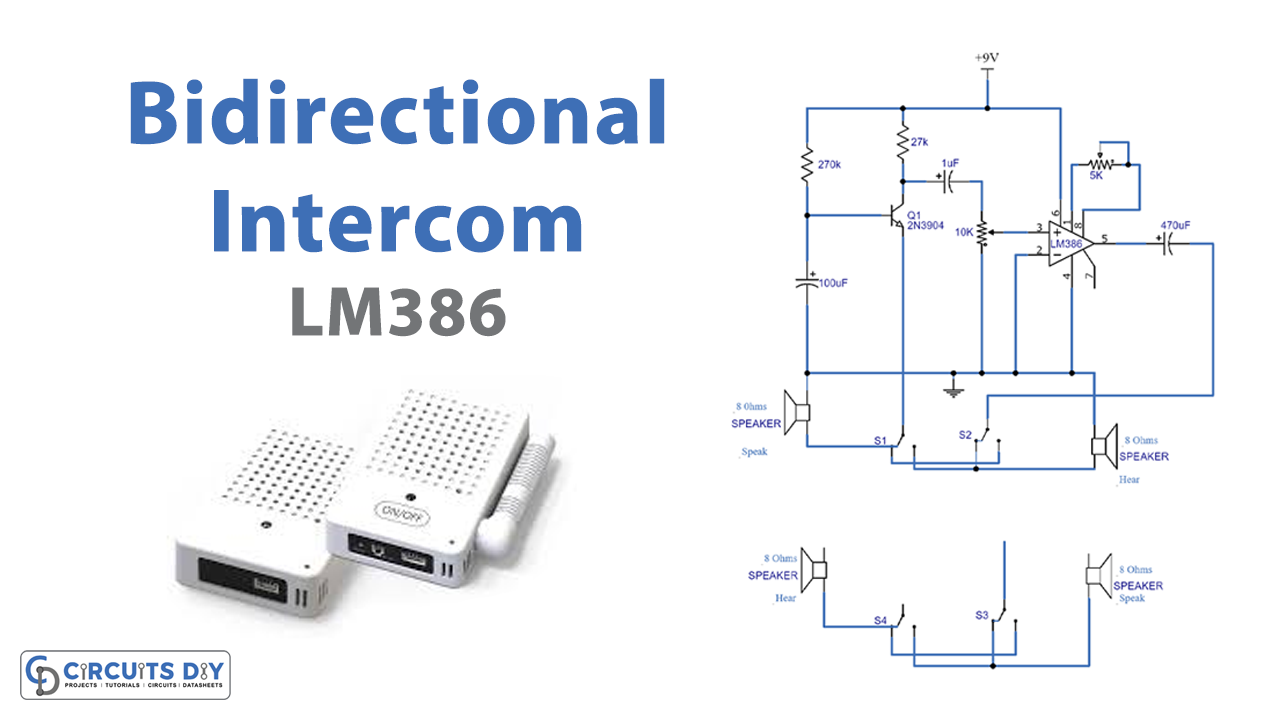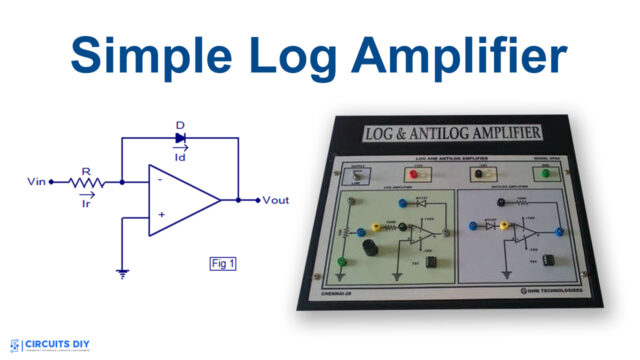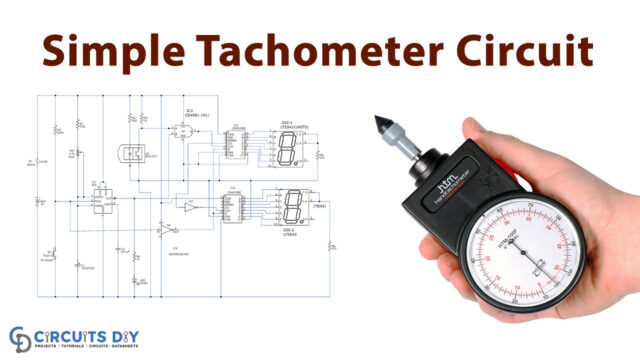Intercom Circuit is a bidirectional communication application for the ease of not-so-far-distant communication. The intercom is simple and easy to build a low-cost circuit using a single amplifier IC LM386 and a 2N3904 transistor. IC LM386 is most commonly used by electronics hobbyists in audio circuits as amplifiers.

Hardware Components
The following components are required to make a Bidirectional Intercom Circuit
| S.no | Component | Value | Qty |
|---|---|---|---|
| 1. | IC | LM386 | 1 |
| 2. | Transistor | 2N3904 | 1 |
| 3. | Switch | DPDT | 1 |
| 4. | Speaker | 8Ω | 2 |
| 5. | Battery | 9V | 1 |
| 6. | Switch | – | 1 |
| 7. | Variable Resistor | 5KΩ, 10KΩ | 1,1 |
| 8. | Resistors | 270KΩ, 27KΩ | 1,1 |
| 9. | Electrolytic Capacitor | 1µF, 100µF, 470µF | 1 |
LM386 Pinout

For a detailed description of pinout, dimension features, and specifications download the datasheet of LM386
Bidirectional Intercom Circuit

Working Explanation
The intercom circuit integrates two 8Ω speakers both functioning interchangeably as a microphone and listening equipment. Hence, for switching between the two actions i.e. listening and speaking, a Double Pole Double Through (DPDT) switch is connected. Also, for the purpose of controlling the volume of the speaker, a 10kΩ potentiometer is used along with a 5kΩ variable resister to obtain the total gain. Moreover, in order to increase the gain from the default value of 20 to 200, capacitors are used.
Applications
To communicate outside of
- The campus of the School
- The building Offices
- Homes












